Inspired: My Discovery to a Different Side of the Moon
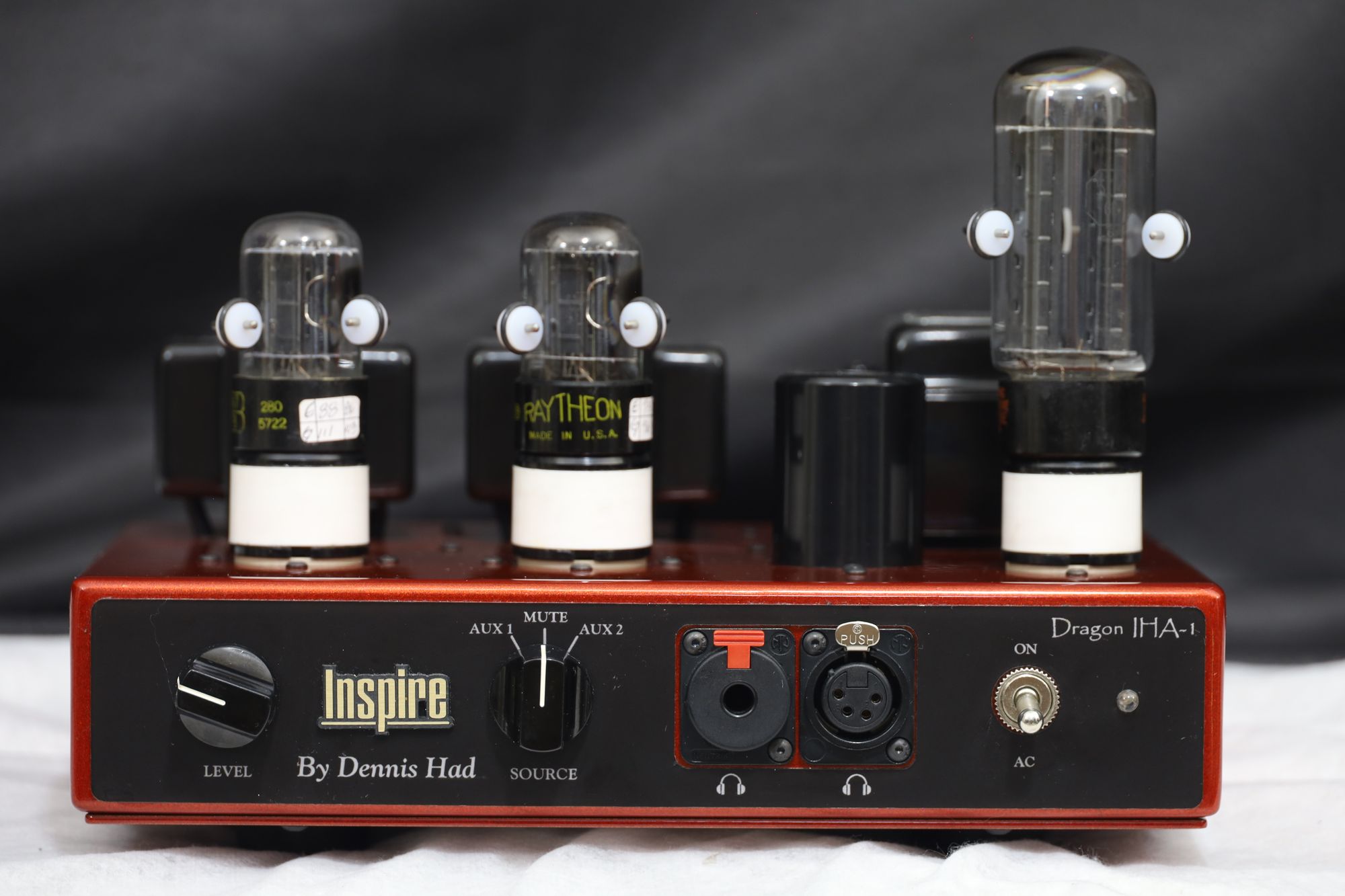
Many moons ago, I was introduced to this little hot rod of an amplifier through YouTube reviews and some coverage on audio forums. One of the first people I remember covering the IHA-1 was Tyll Hertsens, of Innerfidelity, providing show coverage of RMAF in 2014. Tyll spoke with Drew Baird (Founder and President, Moon Audio) about this "bitchin" Dennis Had (Founder, Cary Audio) amplifier in the headphone area of the audio show. Moon Audio has been a high-end audio brand for almost 20 years as of the writing of this review, selling their made-in-house cables, and being a dealer for some popular audiophile brands in the personal audio space. According to Drew, this amplifier was a byproduct of Dennis making a whole host of one-off amps in his retirement and listing them on eBay and a 3-year quest to get Dennis to do a simple-circuit amplifier design for Moon Audio on a larger scale. Due to tube availability and the price of a set at the time, the IHA-1 was more approachable to me when I decided to purchase. Before I was knee deep in tube-rolling nervosa, $40 all in for a pair of 6SN7 tubes and one rectifier to replace the stock new production tubes was a bargain compared to my peers spending that much on a fraction of one direct-heated triode (DHT) tube. All of this is to say that for my first tube amp above $1000, I was ecstatic in 2018 to have my first output transformer-coupled (OTC) experience.
Small Footprint
The Inspire measures about 10” wide x 8” deep x approximately 6” tall (25.40 cm x 20.32 cm x 15.24 cm, respectively) with the stock set of tubes installed. However, I have some old Tubemonger socket savers which do add some additional height to the tubes. The amplifier weighs in the ballpark of 15 lbs (6.8 kg) and has a powder coat paint job that is iconic to a Dennis Had amplifier.
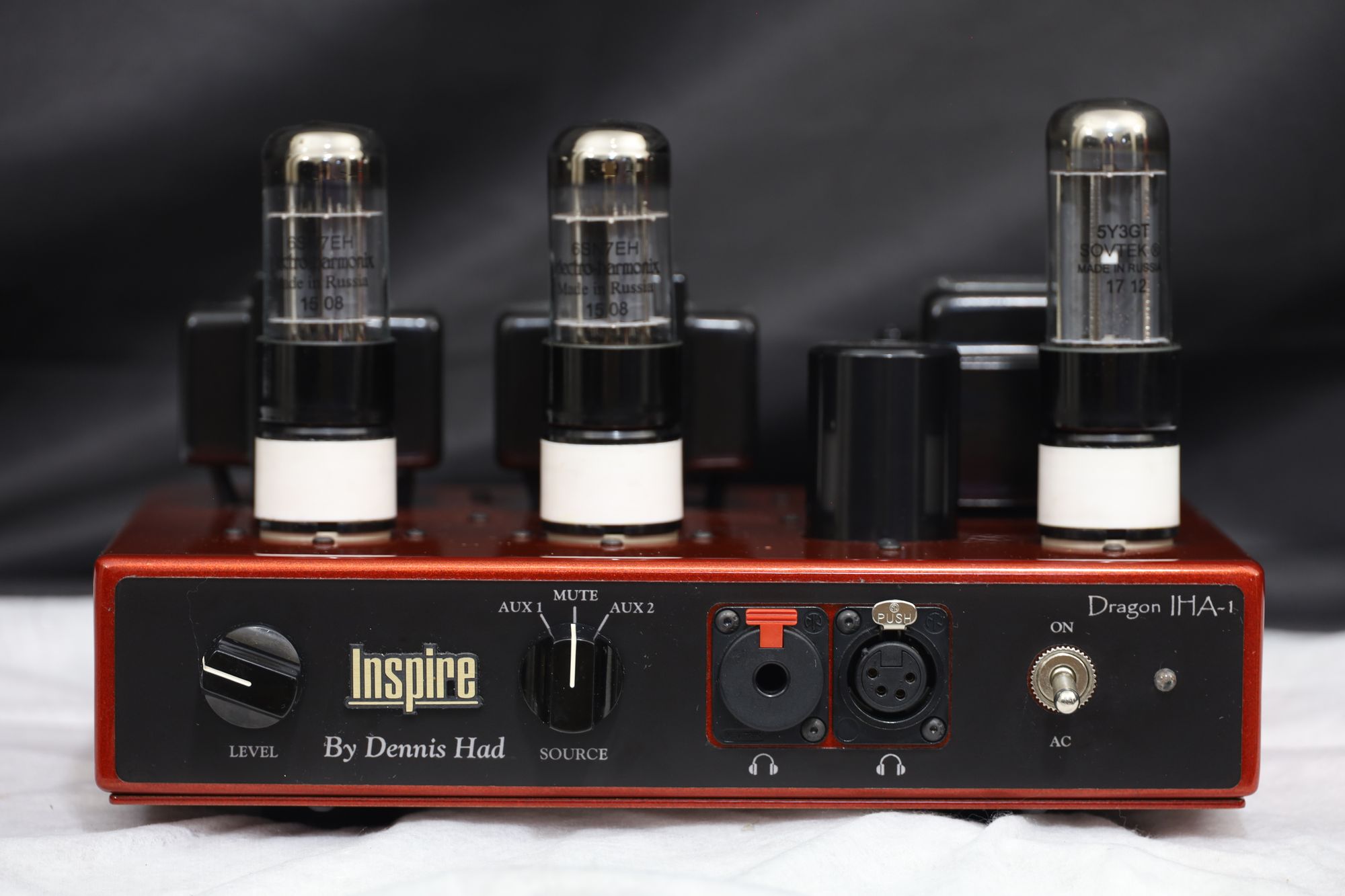
On the front panel are the following from left to right: the DACT-stepped attenuator with 23 steps of volume; the input selection AUX 1, Mute, AUX 2; the pair of locking headphone jacks - ¼” (6.35mm) and 4-pin XLR; and the power switch with accompanying blue LED.

On the rear panel from left to right: the IEC power inlet; the fuse drawer; the switch to turn on the pre-amp section with the accompanying pre-amp output; finally, AUX 2 and AUX 1 inputs.
While 6sn7 tubes are included in the package and recommended for higher power output, I have had experience using 6bx7 tubes which lower the gain. 6bx7 tubes should really only be paired with high impedance, high sensitivity headphones, since my experience has many headphones revealing the amplifier’s noise floor.
OTL vs OTC, What’s the Deal?
I am not an amplifier expert, there are plenty of folks available in the community that will happily give you the intricate details about why one amplifier’s data point sounds better than one or more other data points. What I can confidently mention is that the IHA-1 is an Output Transformer Coupled (OTC) amplifier, and there are some other amplifiers out there that are Output TransformerLess (OTL) designs. In short, a trend in some cheaper amplifier designs are the OTL topology. You may even recognize some of these amplifiers; the Bottlehead Crack, Darkvoice 336SE/Xduoo TA-26, Schiit Valhalla 2, and Woo Audio WA3. The OTLs I’ve had in house and are familiar with can also be grouped together by having a similar feature, higher output impedance. Your headphones you select with a tube amp will have a nominal impedance typically measured at 1 kHz. The relationship amongst the headphone’s impedance, impedance curve, and amplifier’s output impedance will have an effect on sound when those characteristics change. Outside of current mode amplifiers, I prefer having amplifiers with a lower output impedance to have less of an effect on the impedance curve of the headphone I am using. OTC amplifiers that I have tried tend to have a significantly lower output impedance than their OTL counterparts.
How Does it Sound? A Difficult Question to Answer
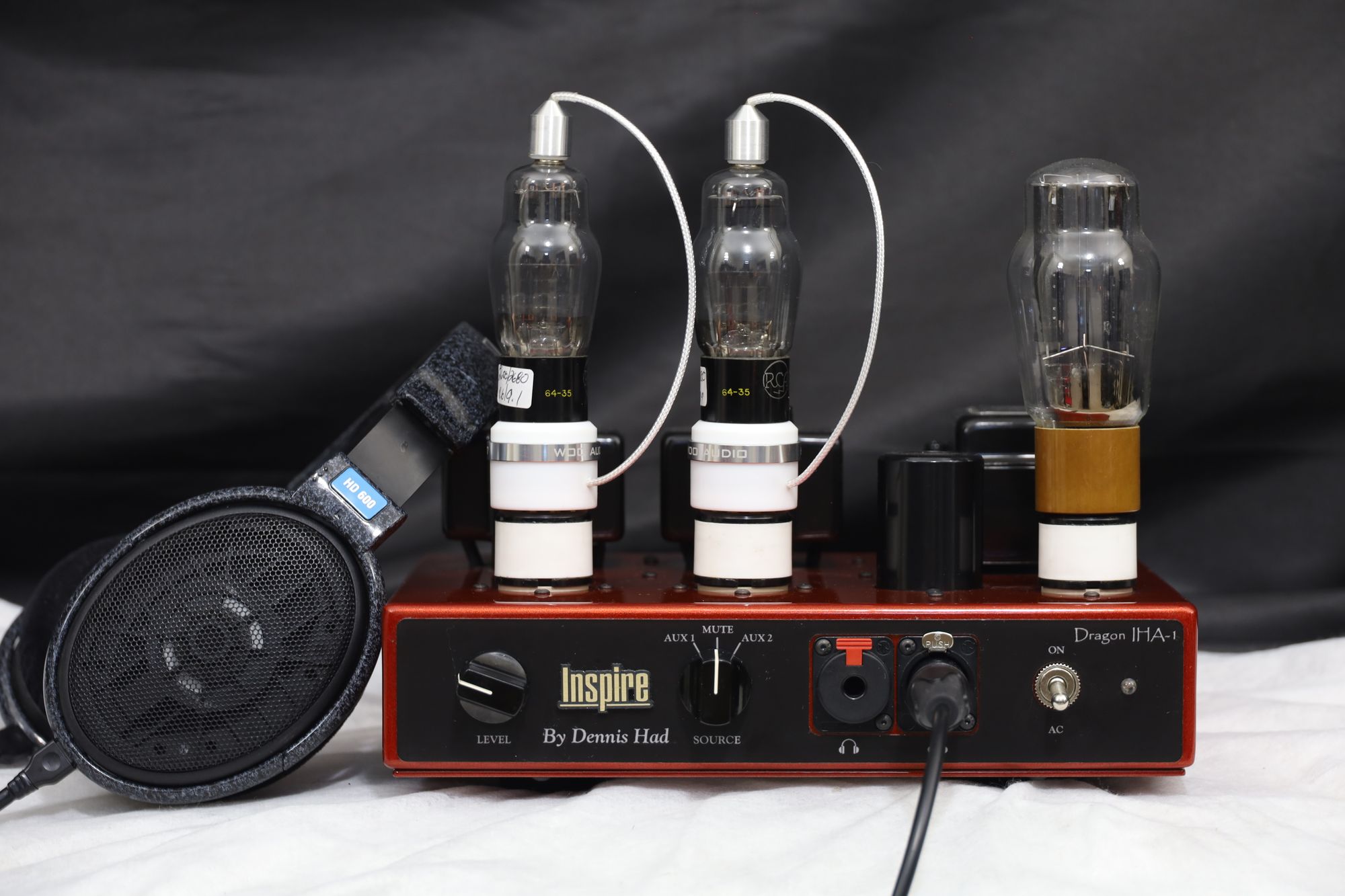
The tube amp’s caveat in my experience always relies on what tubes you run with the amplifier. It’s a variable that solid state amplifiers don’t frequently deal with outside of gain and input/output selection relative to the design. I have multiple lifetimes of tubes for the IHA-1, and I cannot possibly imagine reviewing all of the combinations of tubes based on those variables. I can however give you an idea of what this amplifier sounds like and how certain tube combinations can influence things.
Removing tube rolling from the equation, I feel there are a few overarching sonic traits that can be highlighted with this amplifier. With the Lundahl transformer upgrade that now comes standard, the IHA-1 is a smooth sounding amplifier with decent macrodynamics and above average microdynamics for its price. However, your digital-to-analog converter (DAC) will influence how this amplifier sounds, and should not be an afterthought. The sonic shape of this amplifier is mid-centric, with a rolled-off bass response that lacks some of the 20-30 Hz information, and is down-sloped in the treble for a non-fatiguing listen. While the IHA-1 is not the most revealing of detail extracted from the digital side at the high end of DACs, I have enjoyed the amp out of everything from a JDS Atom DAC (v1) to a Bricasti M1 SE. The detail sent upstream from the DAC is translated by the Inspire on a sliding scale depending on your DAC’s performance. I did find there to be a slight difference when using various power cables and RCA interconnects, however, I would recommend against trying to tune the listening experience with cables on the IHA-1.
I would recommend that everyone use 6SN7 tubes with the IHA-1. While I am a quiet listener, I understand that this amplifier is a low power amplifier. According to Moon Audio, “into 40 ohms, 1.7 watts less than 1% THD 2nd harmonic” with 18 dB of gain, and a noise floor of -87 dB. In more understandable terms, I would only use this amplifier if you do not plan on using severe EQ, or pairing with insensitive planar magnetic headphones. Headphones like the Abyss Diana series and 1266TC, the Hifiman HE6 (and all of its variants) and Susvara, and the Dan Clark headphones that all have way too low of impedance and sensitivity to be used with this amplifier. Using a pair of 6BX7 tubes will raise the noise floor and reduce the gain, both of which make me only desire to use them with high impedance and moderately high sensitivity Beyerdynamic and Sennheiser headphones.
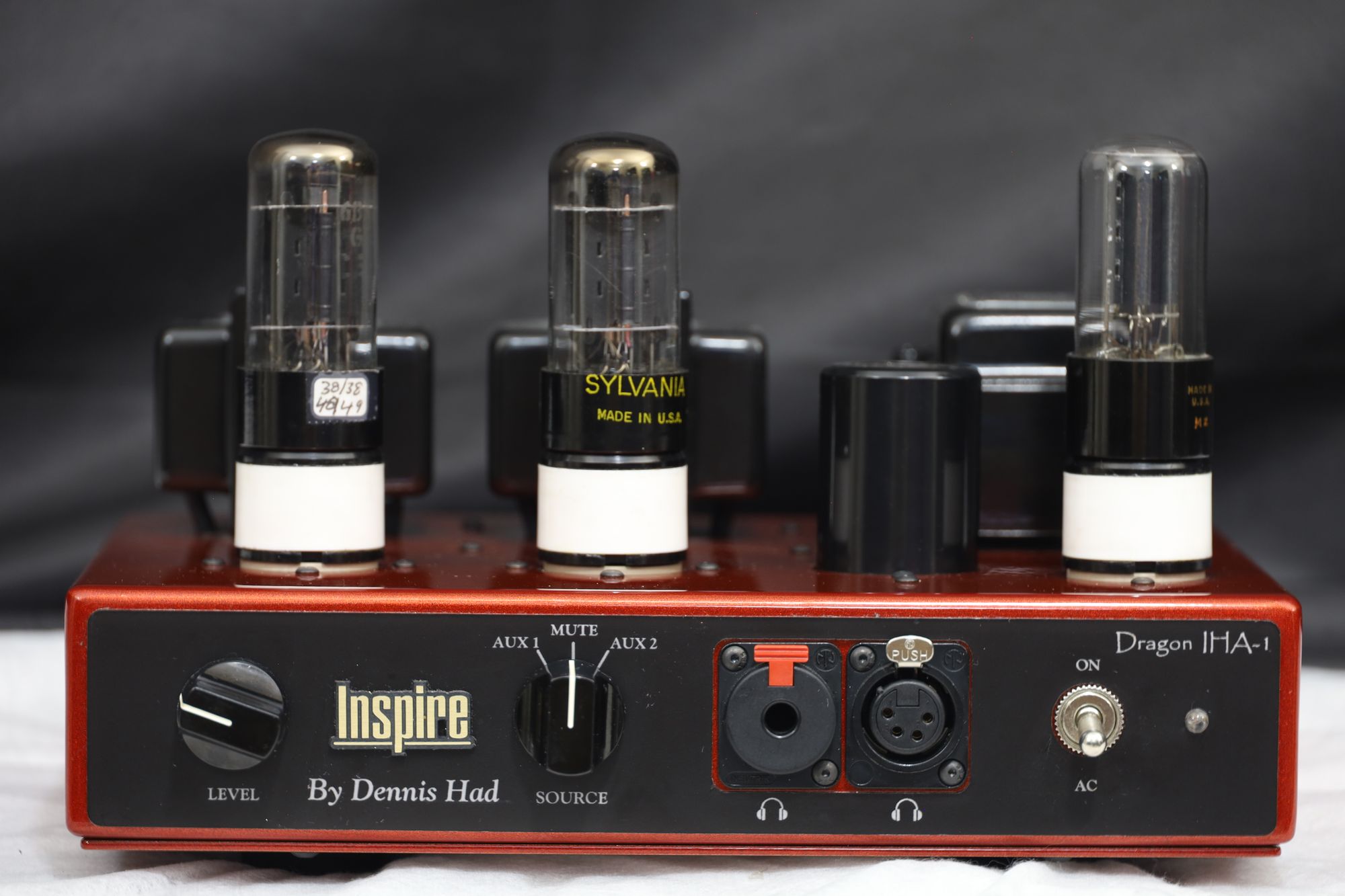
Second, I recommend staying away from 5Y3 style tubes as the voltage drop from 5 Volts (V) tends to also correlate to poor performance with the amp. I noticed sagging bass response on top of the amp’s already sub-par sub-bass performance, and a distracting amount of etch to the audio band. I enjoyed my listening experience with a higher-end 5AR4/GZ34, 5U4/U52, or 5R4GY all which provided better authority to note attacks.
The Chameleon’s Palette
5AR4/GZ34

With this rectifier, I'd recommend 6SN7 tubes that are linear or slightly v-shaped, as to cash in on the more "solid state-like" bass performance and closer to neutral treble levels. Some of the folks in the community swear by certain GZ34's, and it's no surprise why. The staging can be expansive with certain models and the treble against the amplifier's sound signature is a sweet spot for the Sennheiser 300 ohm 6– series. Timbre, attack, and decay all can hit surprising highs with the right driver tube choices and this rectifier. A solid pick.
274B
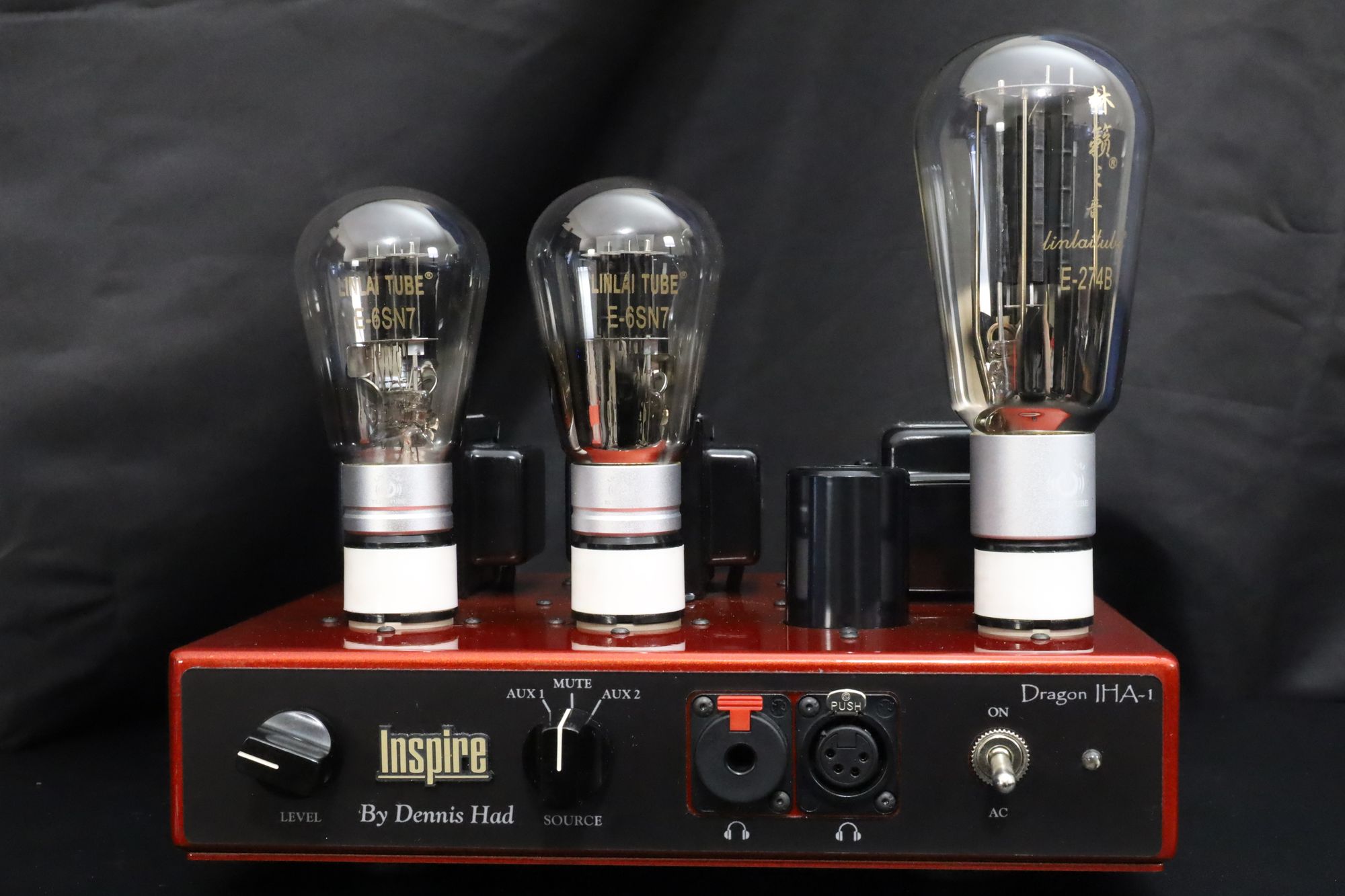
The most flavorful rectifier that I've experienced, with a lot of warmth, bloom, and tonal weight. If you want to add some thickness to a thin headphone, or want to take things to an extreme, this is the ticket to a warm blanket next to the fire. The best experience with a 274B I have had so far is with the Linlai E-274B, which the rectifier alone provided much tighter bass response compared to the Sophia The Sophia 274B (not pictured) is why I say all of this, and I can't in good faith recommend this blindly unless you really want this experience with a headphone.
5U4/U52
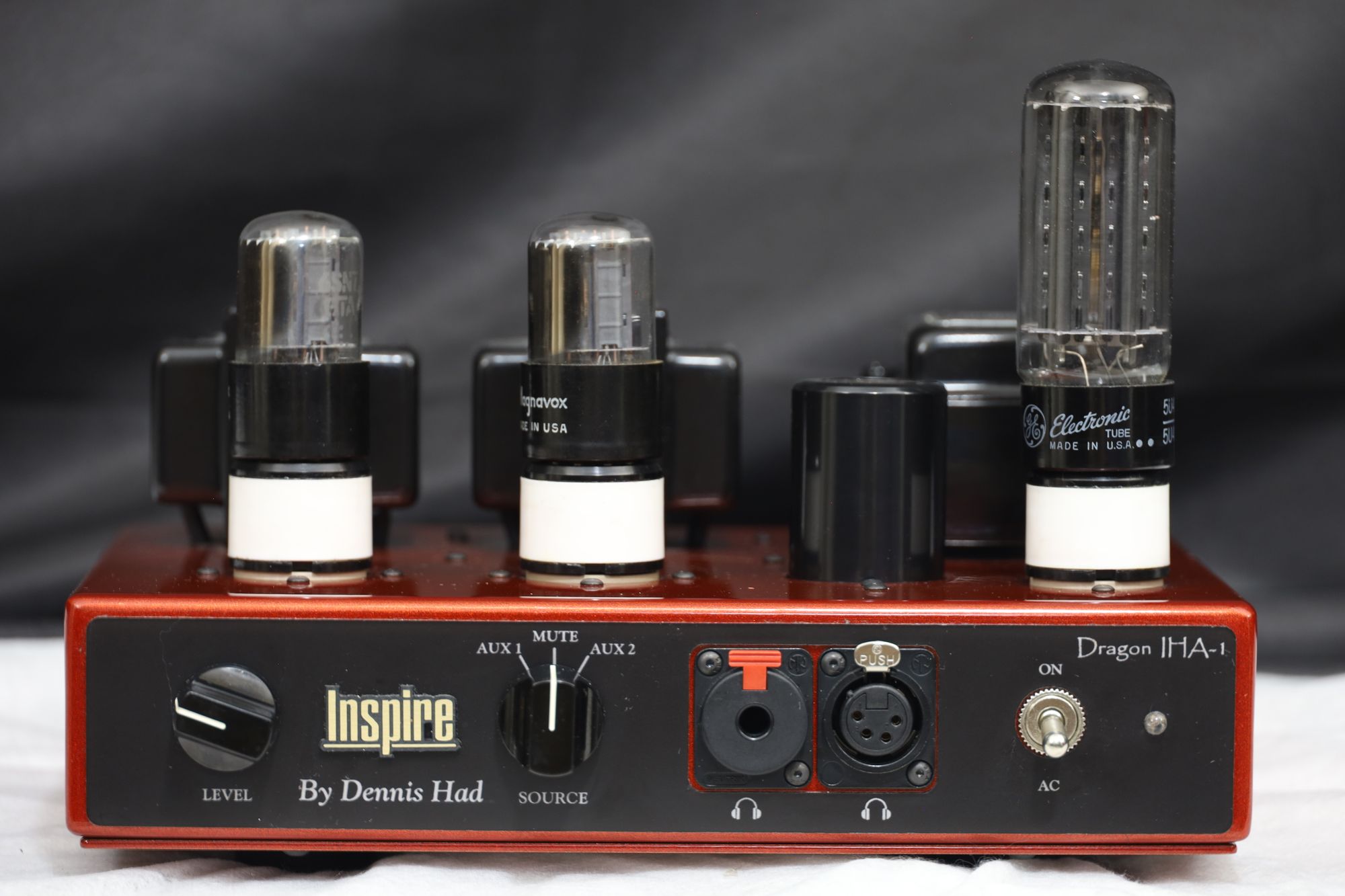
Dennis Had's recommended rectifier with this amp. It does not disappoint with a sweet treble response, recessed to make most listening experiences glorious and non-fatiguing. A little bloomy in the bass with certain internal constructions, but some real endgame tubes can be found in this tube type as well. I've been enjoying these tubes with the HD800 and Utopia. Extra warmth can be achieved with the 6bx7 and this rectifier, depending on your choices. It's a mature warmth that's not as bloomy in the midbass and a little darker in the treble, but a pleasant pick to calm down some brighter headphones. I have a U52 in my possession, and while the price tag for one is steep nowadays, I do prefer it over the standard fare of 5U4(GB) I have in my collection.
5R4GY

A tube type that under certain parameters carries a hefty price tag nowadays, bringing an expansive stage and a thinner sonic experience. Somewhat upward tilting relative to the other options mentioned so far, but with a warmer headphone, this can balance things out nicely. Additionally, a more forgiving pair of 6sn7 could be used to calm down this rectifier.
IHA-1 vs The Best of the Rest
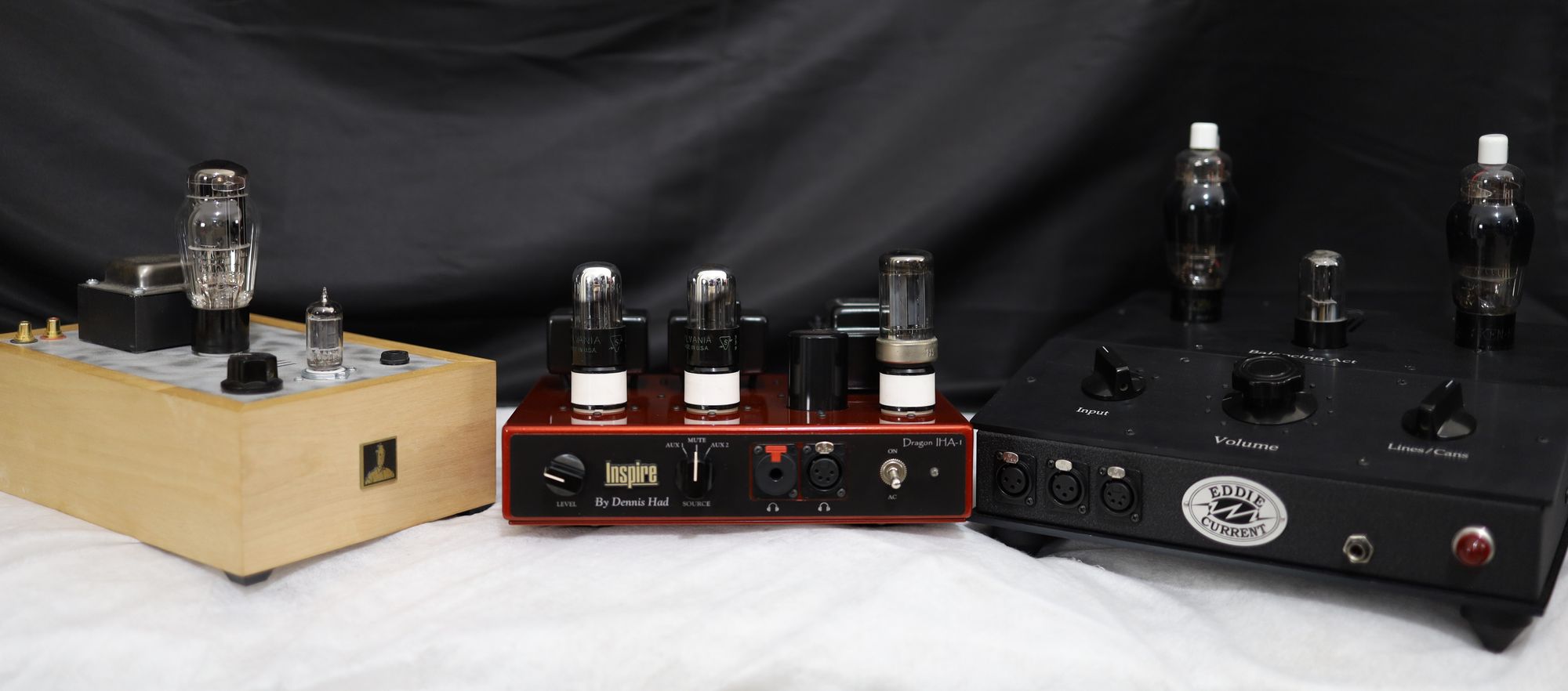
When I listen to the IHA-1 under most circumstances, I am enjoying a non-fatiguing tube amp experience. One that provides the tonal character of the tubes I have rolled into the amplifier, but also to be a solid pairing with the DAC and headphone I have chosen for the session. Its competition over the years has come in many shapes and sizes. From boutique designs to DIY kits from and darn near everything in between, the IHA-1 has stood the test of time in my audio rack. Here for comparison against the Dragon are the Bottlehead Crack and the Eddie Current 307A Balancing Act.
Against the Bottlehead Crack, I feel the comparison is unfair given surface level comparisons. Even with exceptional tubes in the Bottlehead Crack in its stock build, the Crack has flabby bass, muted treble, and a veiled resolution ceiling compared to the IHA-1. I admit, I was very straightforward with my Crack build using someone else's selected bill of materials that more closely mimics the kit available here. I love the Bottlehead with my Beyerdynamic DT880-600 ohm headphones, and find that particular pairing to be stunning. But there's no denying that the DT880 reveal more details with the IHA-1 relative to the build of the Crack I have here.
I am a fan of the Eddie Current amplifiers I have heard over the years, and this 307A Balancing Act is no exception. This maturely warm tube amp provides a lovely listening experience to my headphone collection like nothing else I own. I enjoyed using everything with it from the HEDD Audio HEDDphone One to the Sennheiser HD580 Jubilee. The stage pleasantly expands further than the IHA-1 on most tube combinations and the Balancing Act has much better bass authority than the Moon Audio amp. However, the much larger two-chassis Balancing Act has a multitude of downsides compared to the IHA-1, primarily availability. A 6SN7 tube is used in the Balancing Act (BA), but the 307A pair can only occasionally be found on the internet, whereas the IHA-1 comes with a tube set that you can buy any time and day of the week on the same platforms. Additionally, the IHA-1 I feel can change more to the owner's taste than the BA can, while also maintaining a smaller footprint in your listening space. Finally, and most crucially, the Balancing Act is no longer something you can buy new with almost instantaneous shipping-doubly so considering most Balancing Act units are primarily seen in 300B/PX4 tube configurations.
Conclusion
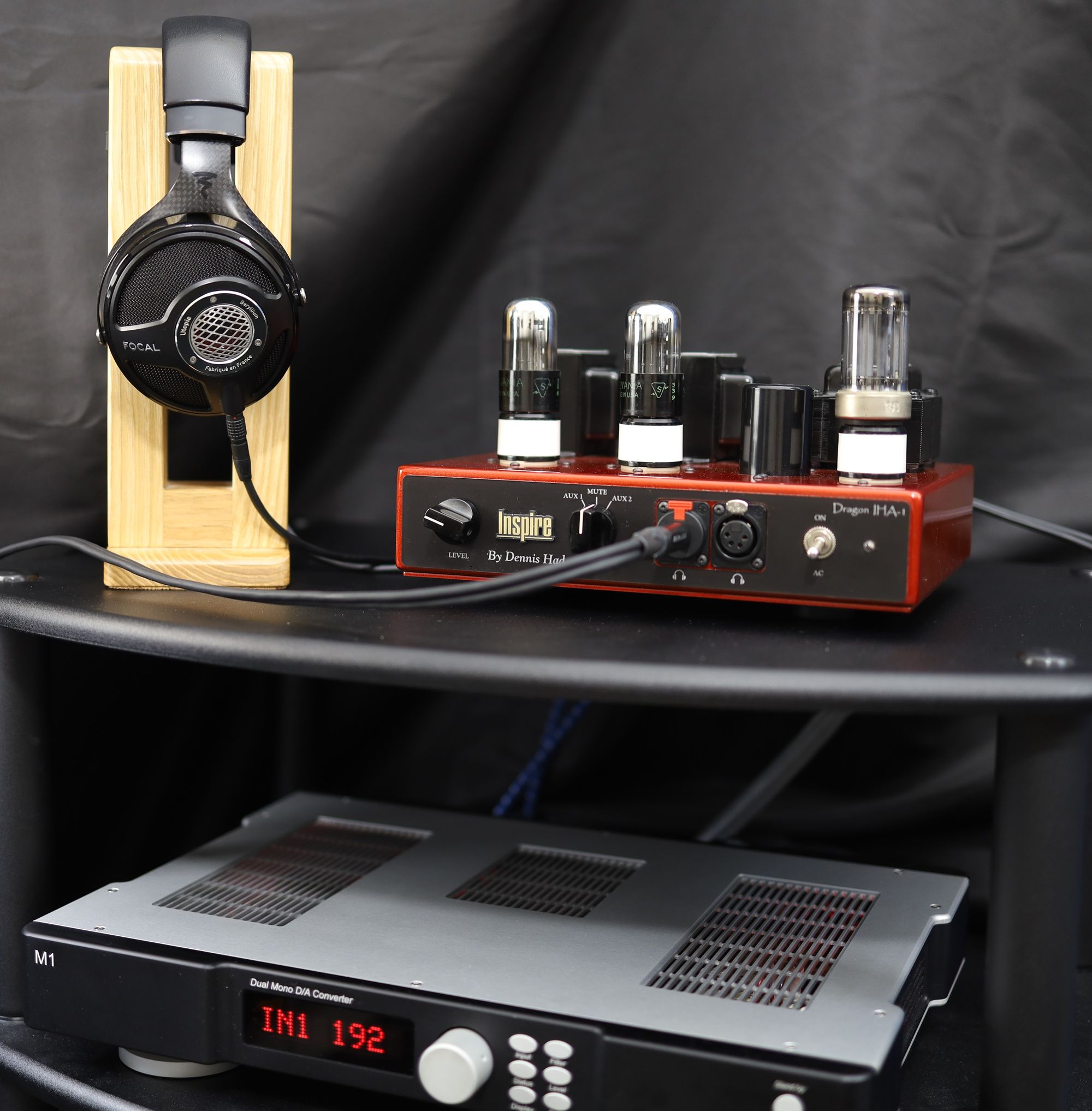
The IHA-1 is a compact chameleon, adaptive to whatever is plugged into it and surrounds it. An amp that is not fully transparent, a bit recessed at both ends of the audio band, but is quite transparent for a tube amp for those who would consider this their first high-end tube amp. The IHA-1 provides me a variable listening experience depending on the tubes and surrounding components. There are other rectifiers and driver tubes you can use, but I encourage others to explore their options only after you have exhausted the direct substitutes before going to adapters.
I came from the likes of a Bottlehead Single Ended eXperimenters kit (S.E.X. 3.0 with C4S upgrade), the Darkvoice 336SE, Massdrop x Eddie Current ZDT Jr (also known as Laconic Labs Night Blues Mini), Schiit Audio Valhalla 2 and Mjolnir 2, and the Woo Audio WA2 before this amp became the primary tube amp I used. All the previous amps were purchased and tube rolled in attempts of upgrading or sidegrading from each other, and I found myself disappointed when nothing actually provided such an improvement. The IHA-1 did.
For a significant time, I saw this amplifier online and wondered what it'd be like but never knew what it was capable of until it arrived in my possession. It's the amp I have owned the longest and still keep to this day. This dragon was worth the chase, and is a benchmark in what amplifier part-synergy is capable of when a storied legend is behind the design.
Comments?
Leave us your opinion.